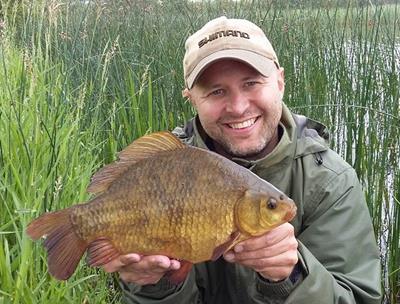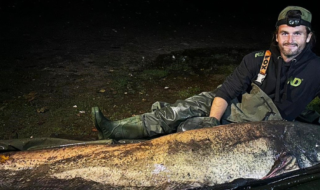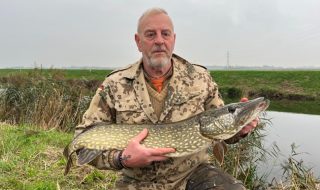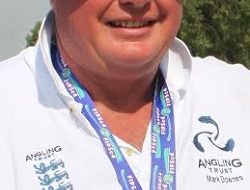The weather or time of year might not be quite suitable for catching crucians in misty, weed fringed ponds but members of the National Crucian Conservation Project have been using the break from fishing for their favourite species to pull together a catalogue of known crucian waters in the UK.
The list attempts to grade waters according to how they are managed and the likelihood of true crucians still being present as opposed to hybrids or brown goldfish.
The National Crucian Conservation Project (NCCP) was the brainchild of angling artist Chris Turnbull and is a partnership between the Angling Trust, the Environment Agency and crucian enthusiasts across the country. It was formally launched at the Angling Trust’s Coarse Fish Conference in May 2014 and the primary objectives are to promote the conservation of the species and its habitat and to encourage the development of well-managed crucian fisheries. A number of videos and fact sheets have been produced on how to create and manage bespoke crucian fisheries and an ID guide was published last year to help develop a better understanding of the issues affecting crucians and to improve the protection of ‘pure’ crucian stocks.
The new ‘crucian catalogue’ has taken over two years to produce and has been painstakingly compiled by Dorset based Mark Wintle (angling writer) with help from crucian expert and fellow author Peter Rolfe, whose book Crock of Gold is widely considered to be the ‘crucian bible’. The listing details over 300 waters spread over the following categories:
A .‘Managed as Premium Crucian Fishery’
Stock recognised as being true crucians and in some cases DNA certified. No F1s or goldfish present. Carp absent or interbreeding managed. High likelihood of catching crucians without ID problems. (8)
B.‘Mixed fishery with stock of crucians’
Current crucian stocks EA supplied, or from approved supplier, or have been photo-checked to assess their authenticity. No F1s or goldfish present. Carp interbreeding managed. High likelihood of catching crucians without ID problems. (21)
- ‘Mixed stock fishery’
Contains genuine crucians but also F1s, carp and/or goldfish/hybrids present. Captures may present ID problems to those without experience of identifying true crucians. Captures of crucians spasmodic. (44) - ‘Ungraded’
Claimed to contain crucians but recent captures rare or unverified, stocking history unknown, may no longer contain crucians or those claimed are actually F1s, goldfish or hybrids. Awaiting further information to see if the venue qualifies for a higher grading. (236)
Mark Wintle said: “I’ve been gathering information on crucian waters for about two years now. Although the high profile waters such as Marsh Farm in Godalming are well known there are hundreds of other waters in the UK that may also contain true crucians. The difficulty in establishing the identity of those waters is that I’ve had to rely on fishery reports, angling club websites and items in the press. It’s quite common that a fishery owner stocked crucians, or what they think are true crucians, into their waters ten, twenty or more years ago yet without some sort of test fishing it’s hard to establish if the crucians are true crucians, or have disappeared due to predation or competition from other species, especially carp or brown goldfish. I would urge anyone perusing the list that we have published to provide more information if at all possible. Ideally pictures of fish caught in the last year that can be examined by myself and Peter Rolfe would help enormously.”
Peter Rolfe added: “It’s clear that more and more anglers are looking to fish for crucians – a fish that seemed on the verge of extinction in the UK is making a huge come-back, thanks to a lot of hard work in recent years from some dedicated people. If any clubs or fishery owners are hoping to add their pond or lake to the crucian cause, do get in touch through the special crucian page on the Angling Trust website or go to my site at www.crucians.org where we can help with identification of existing stock or we can send people in the right direction for new fish. Advice on management for crucians is freely available and willingly given.”
Angling Trust National Campaigns Coordinator Martin Salter said: “This has been a labour of love and is still very much ‘work in progress’, which is why we need anglers to keep on sending in useful information so that we can make this crucian catalogue as up to date and as accurate as it possibly can be. For the crucian strain to be able to survive and prosper it is important to be able to distinguish between waters holding true crues and those that have been compromised by hybridisation or other factors. The good news is that fishery owners seem keen to be included in our listing and that more and more clubs are responding to our call to create bespoke fisheries managed primarily for crucians.”






